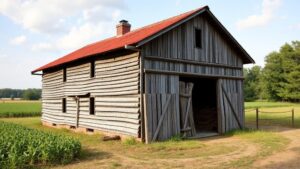Using Archaeological Evidence to Trace Lost Indigenous Trade Networks
Using Archaeological Evidence to Trace Lost Indigenous Trade Networks
The study of ancient trade networks among Indigenous peoples reveals the complexities of their social, economic, and cultural interactions. This article explores how archaeological evidence can illuminate these lost trade routes, providing insight into the lives of Indigenous communities before European contact. By analyzing artifacts, settlement patterns, and environmental data, we can reconstruct the vast networks that once existed across North America.
The Importance of Trade Networks Among Indigenous Peoples
Trade networks were vital to Indigenous societies, serving as pathways for the exchange of goods, ideas, and cultural practices. e interactions fostered economic relationships and social cohesion among different tribes. For example, the Mississippian culture, which thrived in the Southeastern United States from around 800 CE to 1600 CE, created extensive trade routes that connected various communities from the Great Lakes to the Gulf of Mexico.
- The acquisition of materials unavailable in local regions, such as obsidian for tools and shells for jewelry, highlights the significance of trade.
- Trade routes often facilitated the spread of agricultural practices, such as maize cultivation, which was critical for sustaining larger populations.
Archaeologists employ a variety of methodologies to uncover evidence of historical trade routes. These methods include the following:
- Artifact Analysis: Excavation sites often yield artifacts that provide concrete evidence of trade. For example, the presence of non-local pottery found in burial sites in Ohio suggests trade connections with communities in the Mississippi River Valley.
- Geoarchaeology: Analyzing soil and sediment layers can reveal past human activity. In the American Southwest, stratigraphic analysis in sites like Chaco Canyon indicates a bustling trade hub that once connected various tribes.
- Dendrochronology: Tree-ring dating helps establish the timelines of habitation and construction. This technique has been crucial in dating the communal structures in Cahokia, which remains a focal point of trade discussions.
Case Studies of Lost Indigenous Trade Networks
Several case studies illustrate the effectiveness of archaeological evidence in tracing trade networks:
Cahokia
Cahokia, located near present-day St. Louis, was one of the largest pre-Columbian settlements in North America, reaching its peak around 1050-1250 CE. Archaeological findings indicate that Cahokia functioned as a central trading hub:
- Artifacts such as marine shell jewelry and copper items reveal trade with coastal and Great Lakes cultures.
- Mapping the distribution of Mississippian culture artifacts shows a wide-reaching network influencing regions as far away as the Atlantic coast.
The Southwest Trade Routes
The Ancestral Puebloans of the Southwestern United States developed extensive trade networks characterized by the exchange of pottery, textiles, and foodstuffs:
- Sites like Chaco Canyon show evidence of trade with Mesoamerican cultures, as indicated by the discovery of exotic goods such as turquoise, which originated from New Mexico.
- The trade of cotton textiles between the Ancestral Puebloans and neighboring communities reaffirms the importance of long-distance trade networks in sustaining their economy.
Limitations and Challenges in Research
While archaeological evidence is invaluable, researchers face several challenges:
- Data Interpretation: The interpretation of artifacts can be subjective. Different scholars may draw diverse conclusions from the same evidence, complicating our understanding of trade dynamics.
- Preservation Issues: Environmental factors can lead to the degradation of sites and artifacts. For example, rising sea levels threaten archaeological sites along the coastal regions of Florida.
Conclusion
Utilizing archaeological evidence to trace lost Indigenous trade networks provides profound insights into historical socio-economic structures. By analyzing artifacts, environmental data, and settlement patterns, we can reconstruct the vast and intricate trade systems that connected diverse Indigenous communities across North America.
Future research should continue to focus on integrating new technologies, such as 3D scanning and GIS mapping, to further enhance our understanding. Such endeavors not only honor Indigenous histories but also contribute to contemporary discussions regarding cultural identity and heritage. By safeguarding and studying these archaeological sites, we can nurture an appreciation for the rich tapestry of Indigenous trade networks that shaped pre-Columbian America.



